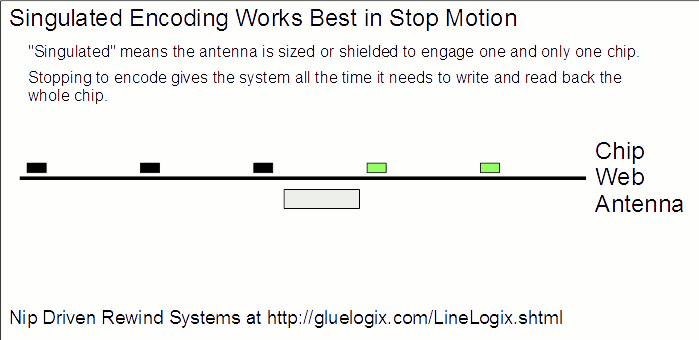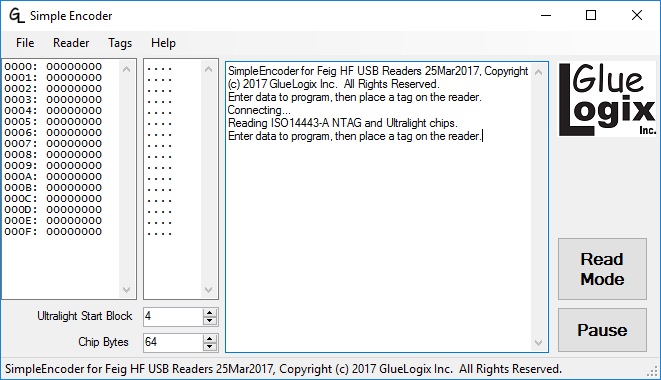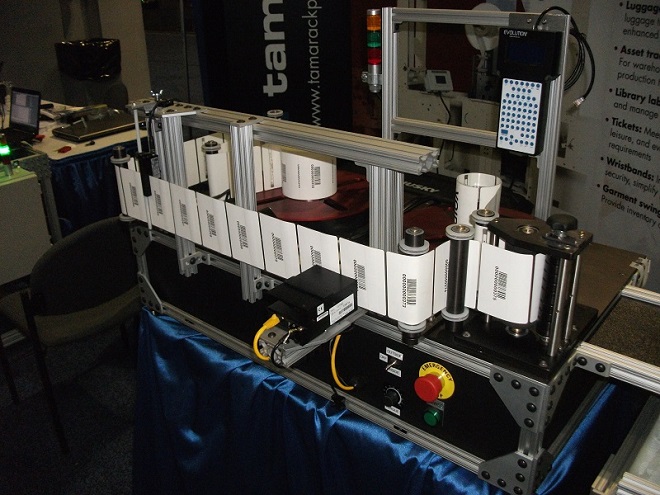

Encode In Motion relies on Addressed Encoding.
The addresses are the UIDs of HF chips or TIDs of UHF chips, fixed by a singulated read antenna upstream of the encoding stages.
Singulation means the antenna is about the same size as the inlay, or shielded to be so, such that the antenna can only "see" one single chip at a time.
Without Addressed Encoding, you must do Singulated Encoding, where the encode antenna can only "see" one single chip at a time.
That works great when you can stop the web, like on a rewind machine, printer, applicator, dispenser, etc.
It's not hard to do with cards in motion if you allow a lot of space and sacrifice throughput.
Singulated Encoding can be hard to impossible to set up with a moving label web. You may be able to get it working for special cases.
If you only ever make one kind of label, and that label has a good geometry for encoding, then that may be the way for you to go.
For low volumes or changing stock, you are usually better off encoding finished labels on a
rewind system that can stop for each one.
You can also encode inlays on a
rewind before insertion.

|
GlueLogix provides a free starter application for encoding and reading back ISO15693 and ISO14443-A Ultralight and NTAG chips
on FEIG CPR30 and CPR40 (CPR40 does not handle ISO15693).
It works similar to LineLogix Standalone:
Readback mode lets you check your work. It also fills write memory so you can keep master chips. For job configurations, logging, moe reader and cip types, barcode and CSV merge capability, and more, you need LineLogix Standalone, a rewind system, or custom software. |

|
|
Providing all the features of the LineLogix system without a transport, the LineLogix Standalone system is a fully functional low volume production system. When activated, it scans continually for new chips. When it finds a new chip, it does whatever it is configured to do. Modes are configured by ASCII format JOB files, and include:
|

|
|
GlueLogix has designed an excellent
rewind machine
for RFID work.
The nip drive allows it to stop the label web with each chip over the antenna. Most rewind systems are driven by the hub of the windup roll, so their speed changes as the windup roll grows. Overshoot also increases with windup roll diameter, both because of the edge velocity and the inertia of the roll. The nip design of the GlueLogix rewind machine cuts through all those weaknesses. The 8020 extrusion frame allows for mounting vision, antennas and any other required accesories on two full sides of the machine. System control is integrated with data flow in the time tested GlueLogix TCU, which runs the machine. All data features of the Standalone system are available in the Rewind system. |

|
GlueLogix has designed and shipped a number of
custom encoding designs,
including
|

|
The LineLogix on-press system
supports a subset of the encoding operations listed above with chips in motion:
These systems are ALWAYS designed for a large number of the same kind of tag. The system shown on the right was implemented on a Melzer machine, with stop capability but no control over the dwell time. To do that in motion, you need long spacing and slow web speed. In motion, this design is generally not economical for anything shorter than luggage tags. |

|